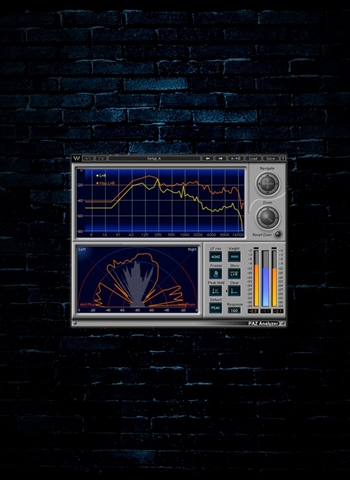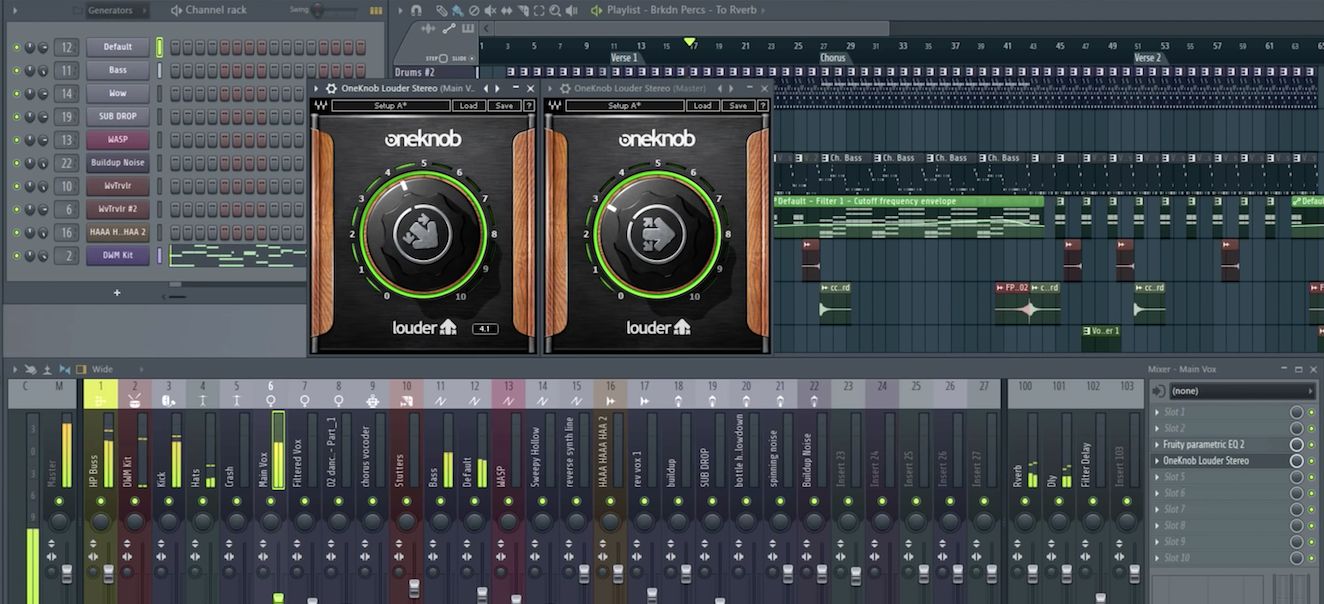Yes, It is an Offline Installer / Full Standalone Setup. We share this file with the name of WavesComplete.zip which you can download via the direct link below. Furthermore, In order to install Waves – Waves Complete 11 Bundle VST 500 MB of free space required. Features: Likewise, Learn and discover new sounds, and music genre. Download VST Free Waves 11 Full Bundle (Win) Waves Mercury V11 Free Download (Mercury, SSL, Abbey Road, MultiRack) Download link at the end of the page 165 plug. Download Free Slate Digital VTM VMR Complete Bundle, VBC, FG-X for (Windows). A lot of responses where saying to let go of this 'tool'(which paz is not; it is a toy), and go by ears. This is very important advice especially for a newbie. Sure, (good) analyzers can be useful, but only if you understand enough of what you are doing to interpret their data in the first place.
They say “don’t mix with your eyes.”

I agree…sort of.
Today, we’ve got tools that yesteryear’s mixers could have never dreamed of. Spectrum analyzers are one of them. By plotting a track’s frequencies on a graph, they allow you to “see” the sounds that your mixes are comprised of.
Don’t get me wrong—what matters most is always what comes out of the speakers. With that being said, the visual feedback that a spectrum analyzer provides can help you make better mixing decisions.
Curious how an analyzer can supercharge your mixes? Here are a few ways to get started…
Waves Paz Analyzer Crack Filmora
1. Foolproof High-Passing
Sometimes, it can be tricky to figure out where to high-pass tracks. Set the cutoff frequency too low, and you risk leaving in rumble. Set it too high, and you’ll rob your track of its fullness and body.
A spectrum analyzer can help.
First, add it to your track as an insert. Then find a section of the song where the track plays its lowest note or chord. Press play and look for the lowest “bump” on the analyzer’s display. This bump represents the track’s fundamental frequency. You can safely roll off anything below it without affecting the thickness or body of the track.
Using a spectrum analyzer to set a track’s high-pass filter
Waves Paz
2. Tackle Frequency Collisions

When two tracks occupy a similar area of the frequency spectrum, they often compete with each other. This can lead to a muddy, undefined mix.
Sometimes, it’s easy to find and fix these problems with your ears alone. Other times, some visual assistance can be helpful.
You can use a spectrum analyzer to compare the frequency makeup of two different tracks. (To pull this off, you’ll need an analyzer with a sidechain input.) This technique makes it easy to identify exactly where your tracks are competing. You’ll then know exactly how to EQ them to fit together.
Using an analyzer’s sidechain input to compare the frequency makeup of two different tracks
3. Identify Resonances
Resonances are buildups in certain areas of the frequency spectrum. Sometimes they’re helpful—adding weight and density to instruments. Other times, they cause a boomy, muddy mess.
Some resonances are easy to spot on a spectrum analyzer. In the upper midrange, they’ll often show up as sharp, narrow peaks. In the lower midrange, they’re often broader bumps. With the help of an analyzer, you can quickly and easily identify where they are (so you can address them with EQ).
Waves Paz Analyzer Crack Camtasia

A potential problem frequency appearing as a peak on a spectrum analyzer
Not all resonances will show up on an analyzer’s display, so it’s worth pairing this technique with a quick sweep up the spectrum to catch anything you may have missed.
4. Create A Balanced Mix
A mix that’s well balanced will typically have an even distribution of energy across the frequency spectrum.
If you add a spectrum analyzer to your mix bus, you can quickly visualize the “shape” of your mix. (Be sure to set its ballistics to slow, so the analyzer averages out short-term peaks and gives you a truer picture of your mix’s tonal balance.)
When observing the analyzer, note any significant peaks or valleys. These areas might need to be addressed in your mix. This technique is particularly useful in mastering, where it can help pinpoint frequencies to cut or boost with EQ.
To learn how to pull off this technique in detail, watch the video below:
5. Measure Your Room
By pairing a spectrum analyzer with broadband white/pink noise and a measurement microphone, you can easily plot out the frequency response of your room. Beware—you might be unpleasantly surprised, as most rooms are far from flat!
The frequency response of a typical home studio (yikes!)

Once you know the unique frequency curve of your room, you can mentally compensate for it during the mixing process. This will make it easier to craft mixes that sound great on a variety of different playback systems.
How do you use spectrum analyzers in the mixing process? Let me know by leaving a comment below!